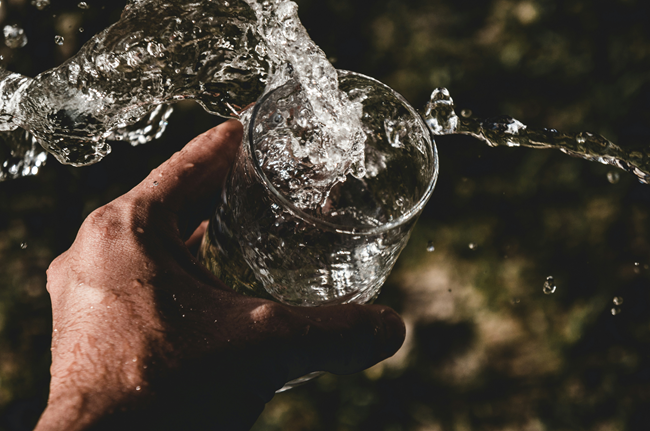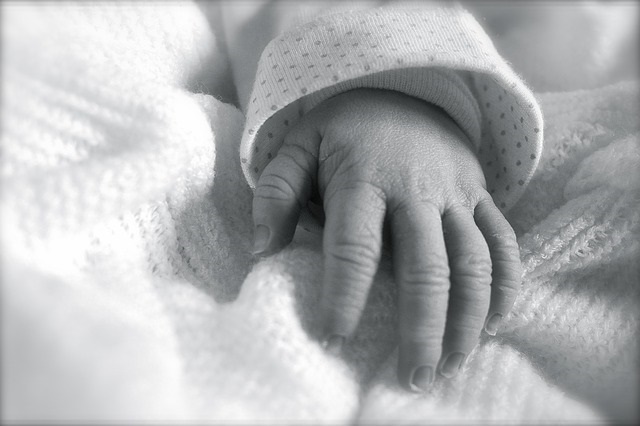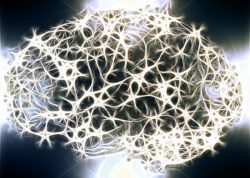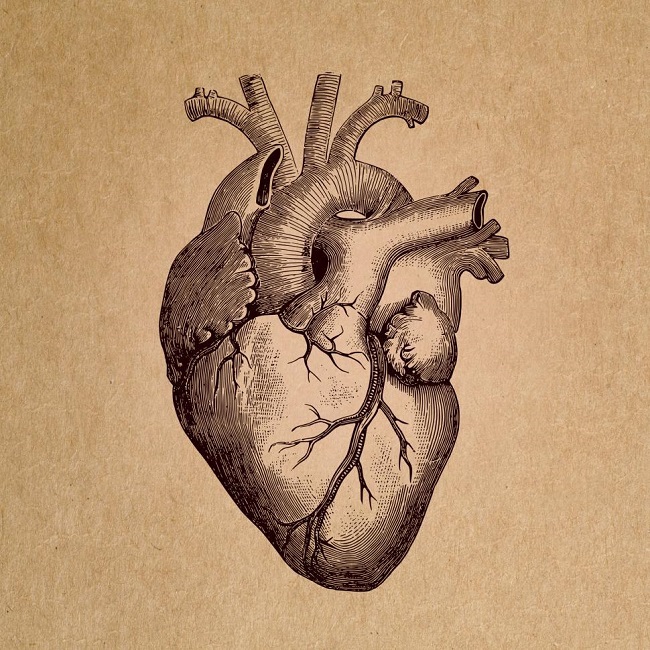Most of us equate the expression “hydrate extra” with drinking more water but – unfortunately – this is incorrect. In any online dictionary “to hydrate” means to create “…a substance that is formed when water combines with another substance…” In other words, water alone is not a hydrating fluid but it must be combined with something to become one. We do not have water in our body on its own; we have a substance we call electrolyte. I wrote substantially on the topic of hydration, mixing water with minerals, as part of the protocol that prevents migraines. However, a new problem has surfaced: when to drink water? Several articles have recently published water drinking instructions on the internet. Most of these articles consider it bad practice to drink water when one is not thirsty and recommend drinking water only when thirsty. There are several serious flaws with this argument.
Sweat
The first flaw is that most research is aimed at athletes, but athletes are not representative of the majority of the population. Furthermore, athletes should not be drinking “water” to hydrate. Drinking water cannot be absorbed by cells without adequate sodium to hold onto it. When athletes sweat, the content of sweat is not water but electrolyte. Many sports drinks aim at re-hydrating athletes but their problem is their sugar or sugar substitute content, defeating the purpose — see how much sports drink one needs to drink to make up the content of sweat for an athlete. Then add up the sugar in a typical sports drink: 1 teaspoon of sugar is 4 grams of carbs. An average serving of a typical sports drink provides between 14 grams to 54 grams of carbs, all sugar, which converts to 3.5 to 13.5 teaspoons of sugar per serving. Drinking sugar substitutes is even worse because sugar substitutes fool the body like it is receiving glucose so insulin spikes but there is no glucose. This creates insulin overflow in the blood causing you to become hungry! Sugar substitutes may lead to obesity and metabolic syndrome. Drinking sports drinks with sugar substitutes actually reduces muscle energy.
Moreover, anything that converts to glucose in the body removes both water and sodium from the cells1 so drinking/eating sugar with sodium (salt is the form in which sodium is available to us) and water is worse than not drinking anything at all. Many athletes have smartened up and drink pickle brine rather than water. Pickle brine is great, assuming the brine is of salt and water and not vinegar. Vinegar is fermented ethanol (alcohol). Thus, drinking vinegar-processed pickles will dehydrate further. Look for pickles made with salt rather than vinegar.
Best Hydrating Fluid
Whole milk is an ideal hydrating fluid because it has a perfect electrolyte balance in sodium, potassium, water, blood sugar (lactose), calcium, phosphorus, magnesium, and protein. Whole milk is THE perfect electrolyte. Some athletes drink water and take salt pills (also called electrolyte pills). That is also a great option, particularly since they are easy to carry around and take when needed.
The second flaw in the argument of “drink water when thirsty” is that many people feel thirst after eating sugar when it is the least advisable to drink water. Since about half of sugar converts to glucose, and glucose pulls water and sodium out of the cells1, if one is thirsty after eating sugar and drinks water, the metabolic process will remove more water from the cells. This can cause edema. Although most articles today blame salt for causing edema, the opposite is true.
While sodium retains water inside the cell, glucose removes water and sodium from the cell and forces the water to be retained in extracellular space2. Eating salt when one has edema reduces edema by the sodium bringing water back into the cell. This was easily demonstrated by a previous article showing how this works.
The problem with most studies that blame salt on retaining water is that no studies have ever controlled for both salt and sugar at the same time in the same experiment. All studies I could find only looked at the effects of salt on the body regardless of the amount of sugar, water, or protein the subjects had consumed before the experiment. Since the body can easily be tipped out of balance and is never in a vacuum for a pristine controlled experiment, one cannot say with certainty that one element makes a particular change without looking at what else is affecting the body. No such studies exist except in my migraine group where we control for all variables. We found that being thirsty often means the person does not have enough salt to keep water where it belongs3. A migraineur should never drink water when she is thirsty, particularly not if carbohydrates were consumed.
The final problem with only drinking water when thirsty is the population of people who have diabetes 2; they are always thirsty. Being thirsty can be a sign of diabetes mellitus and not the need for more water.
Should You Wait Until You Are Thirsty Before You Drink?
Absolutely not, and for sure drinking water alone will not get you hydrated. How much water you should drink is a question I will address in another article. Drinking the minimum 8 glasses of water is a myth; people vary in size, age, and activity, implying that each person needs a different amount of water. Many online water calculators go into detail of weight, climate, activity, altitude, your health, pregnancy, nursing, etc. For each person the amount of water and thus hydration needed (not just water) will differ and for that hydration level you need to make sure you drink adequate amounts of water as part of your hydration protocol.
Sources
- Longo DL, Fauci AS, Kasper DL, Hauser SL, Jameson JL, Loscalzo J. Harrison’s Manual of Medicine 18th Edition. New York: McGraw Hill Medical; 2013.
- Millar T. Biochemistry Explained: A Practical Guide to Learning Biochemistry. Vol reprint edition: CRC Press; 2002.
- Stanton, Angela A. Fighting The Migraine Epidemic: A Complete Guide: How To Treat & Prevent Migraines Without Medicine
We Need Your Help
More people than ever are reading Hormones Matter, a testament to the need for independent voices in health and medicine. We are not funded and accept limited advertising. Unlike many health sites, we don’t force you to purchase a subscription. We believe health information should be open to all. If you read Hormones Matter, and like it, please help support it. Contribute now.
Yes, I would like to support Hormones Matter.















You might find the work of Darko Velcek (Dr.) on YouTube, Rumble (Kefa55) or his website (https://darkovelcek.wordpress.com), interesting. He is a great advocate of hydration but using ‘plasma’ as he calls it – water & mineral-rich unrefined grey moist sea salt (& only this salt).
He has hundreds of videos on heaps of different diseases & ailments & how deep & chronic cellular dehydration is behind them.
Thanks for the reminder to drink water before you end up feeling thirsty! It can be so easy to forget to do this, and by the time you remember to take a sip of water, you’re already dehydrated. Great article!
Glad my article helps. 🙂
Angela
I’ve just begun to read your website. Some things caught my eye already and I look forward to reading up on these.
I started getting migraine 3-4 x a month, 2-4 days each bout. Before a migraine, I would get eyelid swelling and eye tearing. I went to a number or doctors: allergists, ophthalmologists, neurologists, and was given different diagnoses and drops and nothing helped. The swelling and subsiding has damaged the skin around my eyes. I read about eyelid swelling and a number of times read about fluid imbalance. I also have low blood pressure, which doctors think is great, but which I think makes me feel tired.
Just to get started on trying something,how much milk would a 125 lb 5’2″ woman need to drink per day to stay hydrated? I’m not a milk drinker but have been craving it now and then. Also, if milk does a great job at hydration, then am I correct in assuming one wouldn’t have to drink a lot of it?
Thank you. I look forward to learning more here.
Hi Deb,
I wonder if the pain you have are cluster headaches. They start behind one eye usually (can be both but usually one) and they cause tearing and runny nose on the same side, like sinus. Now some migraines also start this way and they are hard to distinguish from clusters. Cluster would be stabbing like pain coming in clusters of several, one after the other, a few seconds apart anywhere from a few minutes to a few days–some people have it last for a couple of weeks or more. (That is why they also call them suicide headaches!) Cluster headaches have no prodromes though…Migraines do.
Migraine would always be one side and not stabbing just a sharp motionless pain, same place all through the 2-4 days.
The eye-lid swelling has 2 possible causes so hydration may not be your best start. First you need to evaluate if you are swollen because of carbs, since glucose removes sodium and water from cells, sending them to form edema–this can be your eye lid puffiness–or you can be very badly dehydrated. The two causes require different solutions.
1) If you had too much carbs, you need to take salt with no water (just a sip to get it down). This will reestablish the sodium in the cells and the sodium will pull the water back, reducing your puffiness. You can read how this works here. If this is the problem and your carbs had no potassium, like you ate a pizza or a large slice of cake, you also need to eat potassium rich food to exchange the water from your cells. Potassium rich foods with low or no carbs are: romaine lettuce, spinach, zucchini, mushroom, avocado, almonds, steak, burger, salmon (wild caught with skin on). Eating potassium will make you urinate the retained water looking like clear water–not yellow.
2) If you got edema because of dehydration, you need not drink too much milk–have a glass in the morning and one at night and if you feel like, at lunch as well. However, the perfect electrolyte is salt and water. The original dictionary definition of electrolyte is salt and water. That is because salt is the only mineral you lose from your electrolyte with every breath you take, or perspire, or cough, or blow you nose. So you only need to replace salt and water. The potassium balance is important because sodium and potassium generate voltage (action and resting potential) in the cells’ membrane so their balance is critical. But in this case you have not lost potassium.
I hope this helps. 🙂
Angela
Thank you so much for all that information.
I’ve kept food diaries and can’t seem to find a pattern with the eye issues. Hormones, yes; the migraines were always pre and post menses, and week of ovulation. I no longer get periods for > 2yrs but it still seems like the same pattern, except changing barometric pressure triggers really awful migraines.
I just had a physical exam and blood work and everything is “normal” yet I feel awful a lot. My physician had no ideas. I feel spacey and out of it, exhausted, sometimes like I need to sleep, but slept well, or think drinking water will help but it doesn’t. I don’t feel hungry during the times I feel unwell. I spoke with my pharmacist and he says it’s all migraine-related with some triptan side effects. I will continue to read here and try things and see if what happens.
I really appreciate your generosity
Deb, perhaps if you joined the migraine group I can offer more help. I have a questionnaire to answer and send to me when you join and I do what I call “analysis”, which tells you where the problems are as far as I can see. So far this has been extremely successful helping migraineurs. From what you tell me, there may also be some mineral absorption issues that you may not have been tested for but which are very typically mutated genes for migraineurs and they need some “bioavailable” vitamins and minerals–not many but a few. It seems to me you may need some of that but I cannot tell until you join. I don’t sell any supplements but I can help you pick the right type–not brand.. you chose whatever your think you prefer. Being a migraineur, since it is genetic, there are many mutated genes and many broken connections in our metabolism that are not evident from a simple blood test.
If you feel more comfortable in a private setting, please contact me at my page and we can set that up as well.
Hope to see you in the group,
Angela
Is there a substitute for milk that is available and has the good properties mentioned (soy, almond/cashew)?
Hi Angela,
Unfortunately none. The properties of whole milk cannot be replicated because it contains high amounts of protein and fat as well as all electrolytes plus additional nutrients. Drinking any nut milk (all nuts, seeds, grains, including soy, coconut, almond, cashew, or anything else), is simply water mixed with these elements crushed or squeezed such that only little nutrients remain. The worth part of it is that because they lack the full spectrum of nutrients, these nut milks are juices, e.g. sugar water.
Some people find that goat milk fits them even if they cannot tolerate cow’s milk, or yogurt that is not strained (straining like Greek style yogurts end up with way too high protein) and is unsweetened. Animal fats are necessary for the human body as are animal proteins. Nothing can replace that from the plant family.
Hope this helps,
Angela